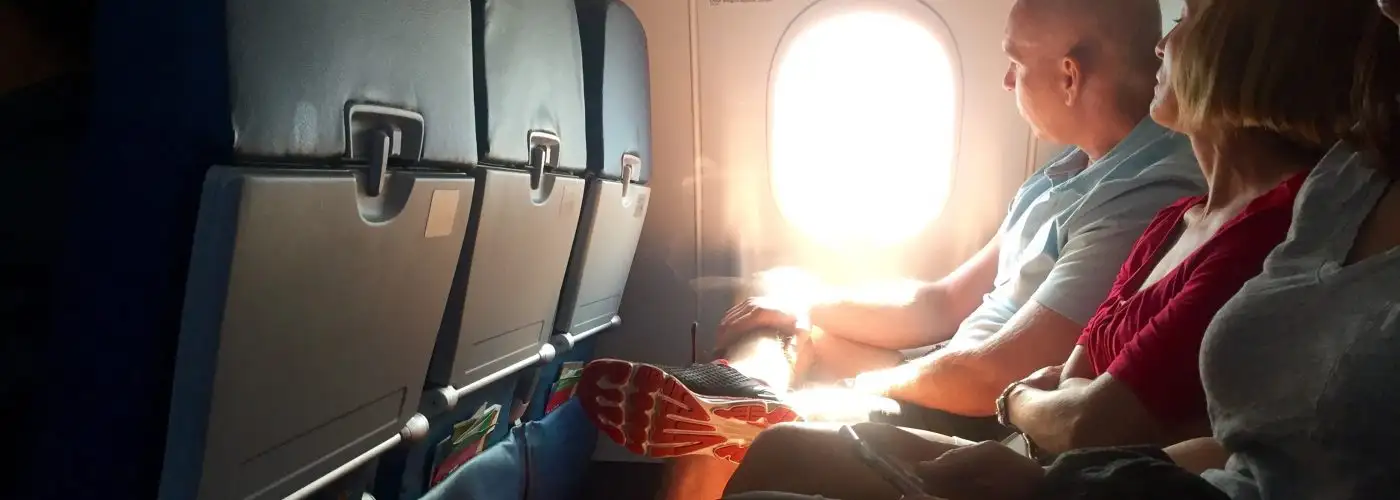Ever gotten off a long flight feeling tired, head-achy, and with a sore throat? All those symptoms are due to the dehydrating effect of the air in the cabin, which according to the World Health Organization, has an average humidity of less than 20 percent. (For comparison, most homes have a humidity of over 30 percent).
The lack of humidity can cause headaches, sore throats, grogginess, dry eyes, and dry skin and the effects can last well after you deplane.
How to Fight Plane Dehydration
To combat dehydration, you should aim to drink about eight ounces of water for every hour that you’re airborne. If you have trouble remembering to drink water, you can use a smart water bottle that will send you electronic reminders to take a sip or a glass water bottle with pre-marked measurements to help you keep track of how much you’re drinking.
You’ll need to bring the water bottle through security empty and fill it up in the terminal. You can also ask a flight attendant to fill it for you during the flight.
Prefer to sleep during the flight, or just don’t want to disturb your aisle row seatmate for access to the lavatory? Try adding Hydration tablets (which contain electrolytes) to your water to fight dehydration. Although, you should still try to get up and stretch a couple of times throughout the flight to prevent blood clots.
Travel-sized nasal spray, eyedrops, and lotions, can all help counter the physical effects of dehydration as well.
Avoid eating salty foods and drinking alcohol while onboard, both of which can intensify dehydration.
Most people don’t get to choose which type of aircraft they fly on, but if you notice that you’re on a Boeing 787 or Airbus A350, you may experience less dehydration than on other planes. According to The Points Guy, the air on these newer planes usually have around 25 percent humidity—a small but effective increase in moisture.
More from SmarterTravel:
- 7 Great Water Bottles for Travel
- 9 Travel Kits That Will Make a Long Flight Bearable
- 10 Tiny Travel Products That Will Save Your Health
Caroline Morse Teel is a Senior Editor with SmarterTravel. Follow her on Instagram @TravelWithCaroline for photos from around the world.
We hand-pick everything we recommend and select items through testing and reviews. Some products are sent to us free of charge with no incentive to offer a favorable review. We offer our unbiased opinions and do not accept compensation to review products. All items are in stock and prices are accurate at the time of publication. If you buy something through our links, we may earn a commission.
Related
Top Fares From
Today's Top Travel Deals
Brought to you by ShermansTravel
12-Night Peru Escorted Tour, Incl. Sacred...
Wingbuddy
 vacation
$2198+
vacation
$2198+
Amsterdam to Copenhagen: Luxe, 18-Night Northern...
Regent Seven Seas Cruises
 cruise
$12399+
cruise
$12399+
Ohio: Daily Car Rentals from Cincinnati
85OFF.com
 Car Rental
$19+
Car Rental
$19+







